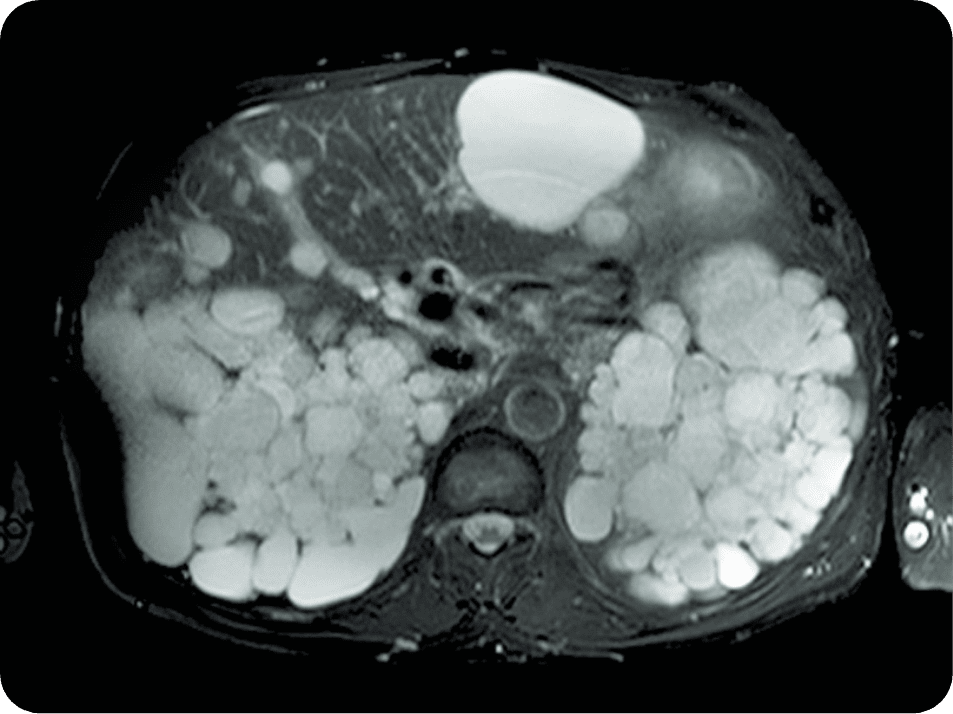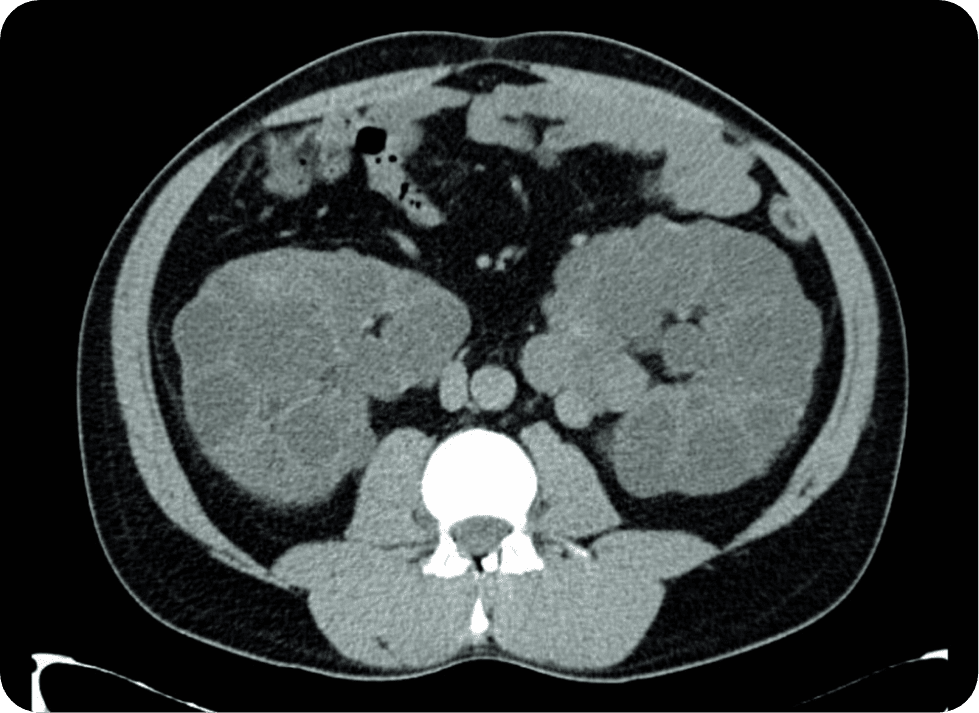ASSESSING KIDNEY SIZE
"How do I get
my kidney size
assessed?"
Nephrologists can measure your kidney volume based on imaging tests or scans and will adjust based on your height. Then, they will see if the size of your kidneys puts you at risk for faster disease progression.
For instance, 2 people might have the same size kidneys. But in a shorter person, there would be a greater risk.
Or, 2 people might have the same size kidneys and same height, but if one is younger, that person may be at risk for faster disease progression.
Each of these patients has a combined kidney volume, also called total kidney volume (TKV), of 800 mL. Each of their kidneys is about 400 mL, which is slightly more than 13 fluid oz.
TKV can help predict the rate of disease progression in ADPKD.
"How will the nephrologist measure
my kidney size?"
- There are multiple ways to measure kidney size
- You should be screened for ADPKD if you notice certain signs or symptoms, which are often caused by complications of the disease
- Imaging tests can help your doctor see the number of cysts you have and if your kidneys are bigger than they should be and you are at risk for progressing at a faster rate
Your nephrologist will request a magnetic resonance imaging
(MRI) or a computed tomography (CT) scan to get a more
detailed picture of your total kidney volume.
An MRI or CT scan reliably measure
kidney size to determine TKV
Your nephrologist may request an ultrasound for younger
patients to measure kidney length when an MRI or a CT scan
is not available.
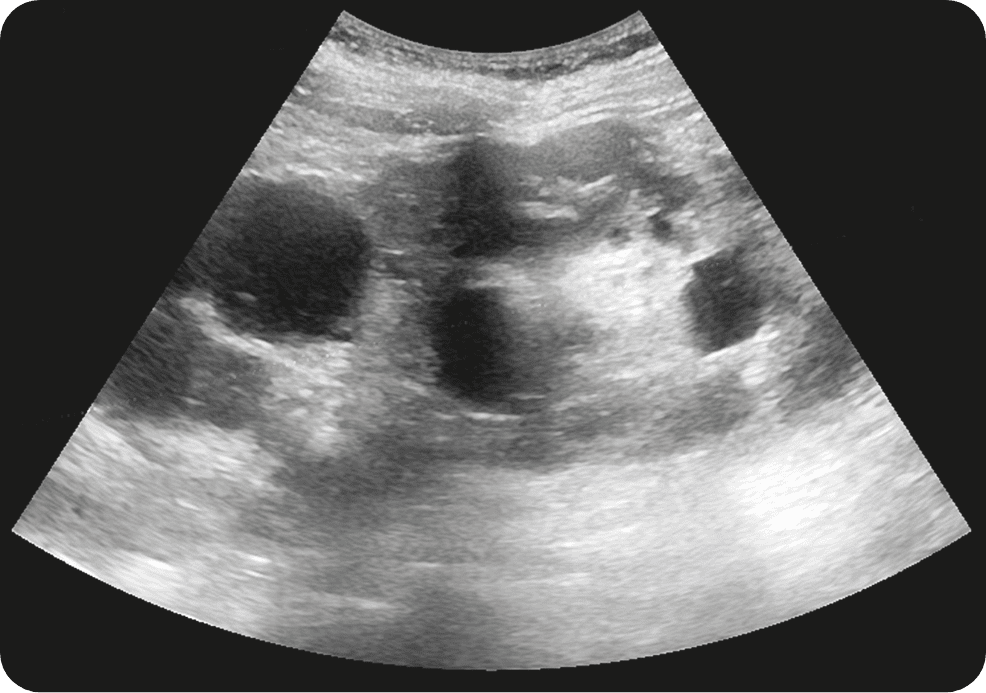
Ultrasound
If you’re under the age of 45 and your kidney length is ≥16.5 cm, you
may be at risk for faster disease progression
Your TKV can help your nephrologist determine your risk for faster disease progression. Once you have these measurements, your nephrologist may be able to determine how fast your kidney function may be declining by plotting it on a graph, similar to the one below.
ADPKD imaging classification can help predict your rate of disease progression
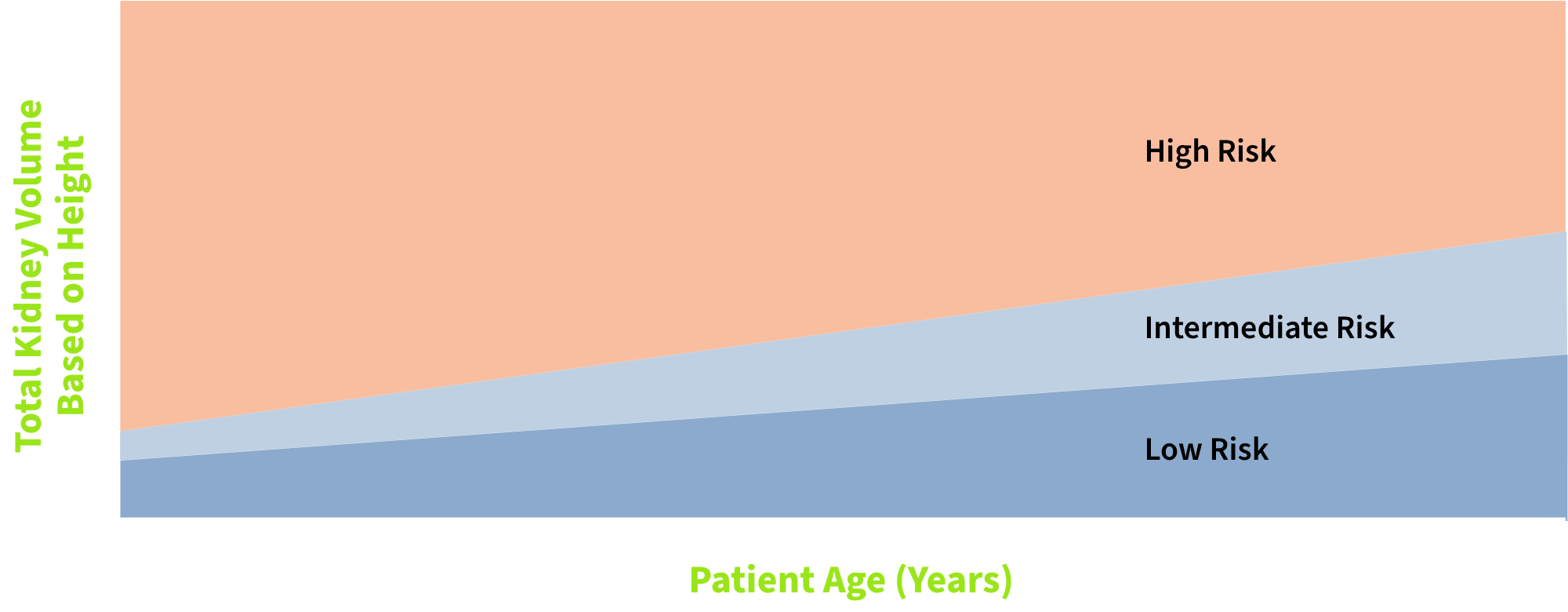
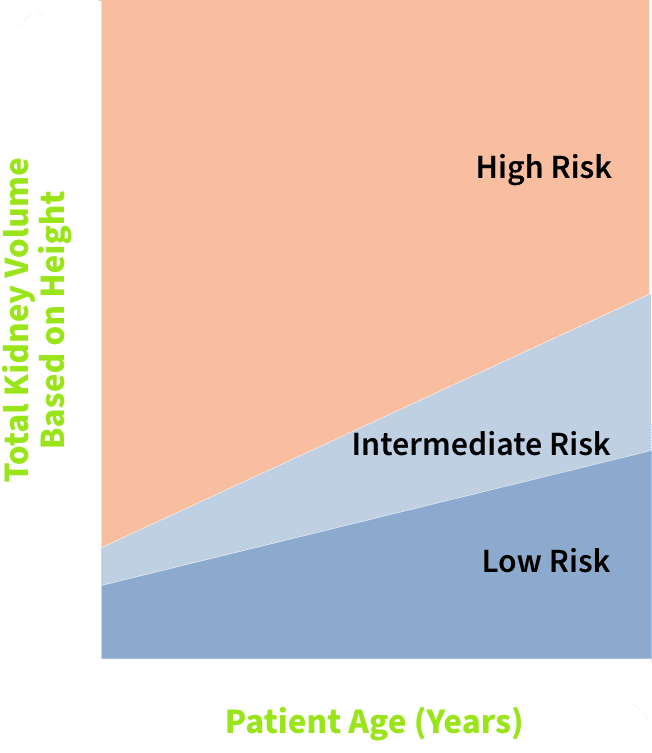
Talk to your nephrologist today
It is important for you and your nephrologist to know if you are at risk for faster disease progression in order to help choose the right disease management
strategy for you.
ADPKD=autosomal dominant polycystic kidney disease.
